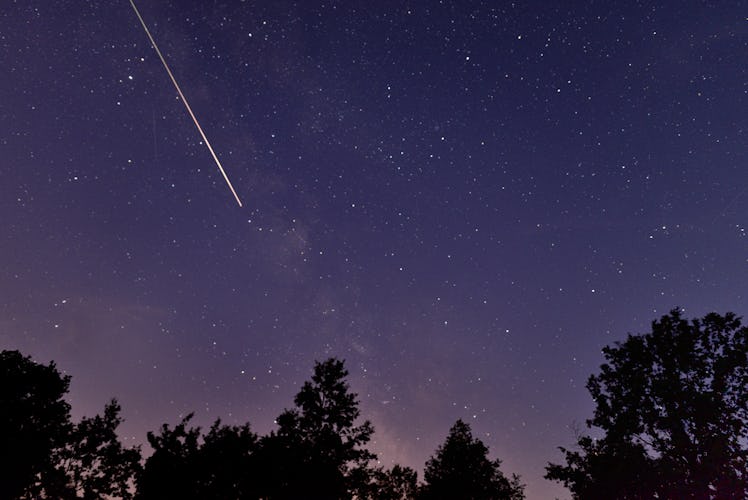The Astounding, Prolific Quadrantids Meteor Shower Will Peak In Days
The Quadrantids are known for bright fireball meteors, and during its peak, up to 200 meteors per hour can be seen under perfect conditions.

The first meteor shower of 2023 is about to shoot through our skies, and it’s absolutely not one to sleep on. The Quadrantids meteor shower is known as one of the best of the year because of how active it is. But unlike other meteor showers, its peak only lasts for a few hours, so it’s more important than others to mark your calendars so you don’t miss it — and have to wait a whole year to see it again.
The Quadrantids meteor shower has the potential to reveal 200 meteors per hour during its peak. It’s one you don’t want to miss if you and the kids love to watch these sky shows, and a good one to catch if you want to start something new. Here’s everything you need to know.
What are the Quadrantids meteors?
The Quadrantids meteor shower is unique because it originates from an asteroid, not a comet, like most sky shows do. Comets are made up of ice, dust, and rock whereas asteroids are made up of rock and metal.
NASA explains that the Quadrants originate from asteroid 2003 EH1, a small asteroid that measures two miles long and takes around 5.5 years to orbit around the Sun.
NASA notes that the Quadrantids are known for bright fireball meteors, and during its peak, up to 200 meteors per hour can be seen under perfect conditions.
When will the Quadrantids meteor shower peak?
TimeandTable.com notes that the Quadrantids meteor shower is active for around three weeks between the last week of December and the second week of January. The peak period, when the asteroids are most active, will occur on Jan. 3 to Jan. 4.
The exact predicted peak, based on data from the American Meteor Society, is at about 10:00 p.m. EST, or 3 UTC on January 4th, per EarthSky, so well after the sun has gone down depending on where you are. EarthSky suggests dedicated stargazers wanting to view the shower “try late night January 3rd to dawn January 4th, in moonlight.”
It’s important to note that the Quadrantids have a very strong peak, but it's only hours long, not days, so the window of viewing matters a lot — and it doesn’t last as long as other showers.
“Unlike other meteor showers that tend to stay at their peak for about two days,” EarthSky explains, “the peak period of the Quadrantids only lasts a few hours.”
How can I watch the Quadrantids meteor shower?
You don’t need to have any special equipment to watch the meteor shower, and if this is your first time trying to watch the shower with your kids, there isn’t much you need to catch up on either.
Like all meteor showers, the Quadrantids are best observed under a dark sky and away from any city light. Make sure you have a lot of patience and dress for the cooler weather since you’ll have a better chance of spotting a meteor the longer you’re outside looking. Sitting in a chair and looking up is a comfortable way to view, but if you’re able to lie down on the ground and look up and around, that will be your best bet.
The next meteor shower won’t come until April 2023, when the Lyrids meteor shower hits the sky.